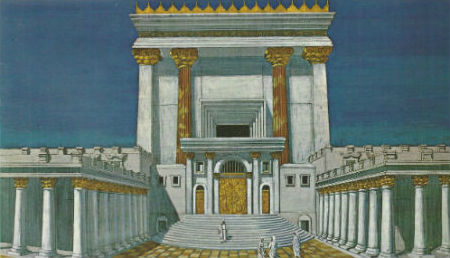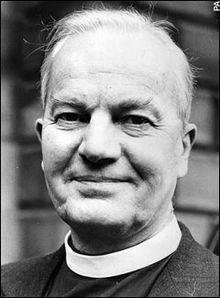 The Book of Hebrews begins before time itself was created.
The Book of Hebrews begins before time itself was created. The Book of Hebrews begins before time itself was created.
The Book of Hebrews begins before time itself was created.As we’ve been saying in this series, the Letter to the Hebrews is considered one of the most difficult New Testament books. It presupposes a lot of knowledge of the Levitical system and gives a series of unsettling warning passages which seem to undermine the certainties we find in other parts of Scripture (Hebrews 2:12-4; 3:7-4:11; 6:4-8; 10-26-31; 12:14-17).
The majority opinion has been that the letter is a warning to Jewish Christians especially, against returning to Judaism. James the leader in Jerusalem had been killed in 62 AD and this reflected pressures that were building that would erupt in an all-out war with Rome (66-73). Perhaps pressure was on to conform in the hot-house atmosphere of Jerusalem where the extremists had taken over. The apostle Paul ran into this explosive fanaticism when he was almost pulled apart by a wild mob at the Temple Mount (Acts 21).
So “turn back to the religion of Moses or else” may have been the siren song (Hebrews 3:6-7). Or some were simply tiring of waiting for the Lord’s coming or just drifting along (Hebrews 2:3-4). Hebrews makes the case emphatically: Christ is directly asserted as superior to Moses, our theme this week (Hebrews 3:1-6).
 Jewish High Priest: As splendid as the ritual was it was but a pointer to Jesus the heavenly high priest.
Jewish High Priest: As splendid as the ritual was it was but a pointer to Jesus the heavenly high priest.As we’ve already seen, the first three verses of Hebrews 1 extol Jesus as
God’s Son
Heir of all things
Maker of the worlds
The express image of God
The Expiator of our sins
The Upholder of all things
Seated at the right hand of God
Opening as it does with this pre-History, the Hebrews letter can be described as a Bible in itself – from creation language (1:2) to a glimpse of heavenly Mount Zion (12:22). This is covering a lot of ground.
Hebrews 2 continues to assert the superiority of Jesus to the angels (vv. 1-8) and then focuses ever more closely on Jesus coming from the Father’s bosom to “taste death for everyone” (2:9). Hebrews 2:14-15 describes this crushing triumphant encounter of Jesus with the forces of sin and death. It was a costly victory, but one that assured the deliverance of the human race from failure and degradation. The Scottish theologian Thomas Torrance wrote forcefully about the divine strategy behind what we know of as the Incarnation – Jesus becoming a baby in Bethlehem:
“The Son of God become man is the strong man of Jesus’ own parable who invades the tyrant’s house and by his power subdues him, binds him and despoils him of all that he has unjustly usurped (Luke 11:21-22). But he enters the house of alienation and bondage under the power of evil and subdues the power of evil not by divine violence, but by obedience and steadfastness as the Son to the Father’s holy will in the face of the attack of all the power of evil. And so he overcomes …by living out perfectly within all the conditions of our humanity the obedience of the Son to the Father.”
This was God’s plan, the clear outline of how He would rescue humanity from its addiction to sin and violence. On our human side this involves a profound change of mind, what the Greeks called “metanoia” and the New Testament calls repentance preparatory to a life of trustful submission. Jesus was preparing for this pioneering role when he discussed Scripture with the learned doctors at age 12 (Luke 2:46) and accepted the ordinance of John the Baptizer’s baptism of repentance to confirm to himself his own acceptance by the Father (Mark 1:4-11). In the wilderness he defeated Satan by not bowing to his offer of world rulership and the die was cast for the conflict that would mark his life.
 Officials from the first century Temple (depicted here) executed James, leader of the Jerusalem church,
in 62 AD. This may have been the somber background to the sobering Letter to the Hebrews.
Officials from the first century Temple (depicted here) executed James, leader of the Jerusalem church,
in 62 AD. This may have been the somber background to the sobering Letter to the Hebrews.In short Jesus won through what some consider losing on the cross and triumphed through weakness before being raised in power. As Torrance adds:
“This is what Christ does through all his life, and what he did on the cross. He penetrates into the very heart of humanity where evil is enthroned and guilt is entrenched and defeats evil by expiating guilt, by judging it through his holiness (until) he burst even the bonds of death asunder. Thus by taking our flesh upon himself the Son of God exposed himself to the fearful assault of Satan, and evil, and sin. He advanced to meet it at the very summit of its wickedness in crucifying him, drew it all to himself and slew it as he submitted to the divine judgment upon it…it was through that weakness, in which he submitted to all the assaults of evil upon him in order to bear them, that he broke all its power in expiation and triumphed over it all in the resurrection, so making an open show of all the powers of evil and darkness, in manifesting that even their ultimate assaults against him in death itself could not avail“ (Colossians 2:15).
Once again the parables he gave—seemingly so simplistic—pointed out crucial aspects of what God was doing here below. Consider the teaching inherent in the story of the young nobleman who went into the far country to receive a kingdom and to return (Luke 19:11-27).
 Tom Torrance
Tom Torrance“Thus the Son who took the way into the far country in order to find us and restore us to the Father,” Tom Torrance continues, “returns in triumph bringing with him many sons and daughters to glory. Through the fulfillment of his filial obedience and love within the conditions of our alienation and hostility, he opened up a new and living way in himself for us to return to God as sons and daughters to their heavenly Father” (Incarnation, pages 78-79).
That is quite a theological mindful to ponder but it is where texts such as Hebrews 2:10 with its reference to “bringing many sons to glory”and a ”new and living way” are pointing. Jesus as our Forerunner (the Captain of our salvation in King James terms – Hebrews 2:10) shows by example how we human beings can be released from the fear of death and the bondage to sin (Hebrews 2:15). “Be of good cheer,” Jesus said just before his departure,” I have overcome the world.”
Hebrews here offers us a breathtaking synopsis of the Plan of God leading to our salvation. This is what makes it such a marvelous book.
But…to get back to the first century, there is one more mental obstacle to remove before these Jewish Christians in Jerusalem can cast their total lot in with the New Testament church of Jews and Gentiles.
In the first century world the Jewish community was famous for three cardinal practices – circumcision, Sabbaths and food laws. These cherished beliefs of even Jews who had accepted Christ had to be addressed at the first church conference in Jerusalem in 49 AD as shown in Acts 15. How much of the Jewish law, the venerated Law of Moses, did Gentile converts have to keep? The church ruled that the Gentile word was free from these obligations but were advised not to grossly offend their Jewish brothers. Paul elaborated on this in Romans 14 where he said the obligation not to offend was a major priority. But Paul had shown in his Galatians letter that circumcision was a matter of the heart and not the letter and he himself ate with non-Jews without fear or favor (1 Corinthians 10:27).
Circumcision traced back to Abraham and the Sabbath laws back to Moses. These were the two big names in the Jewish religion and still are. The Hebrews letter outflanks this undue devotion to Moses in Hebrews 3:1-6. The argument is clear-cut. Moses served in God’s house but Jesus as co-Creator with his father built the house! The conclusion? “Jesus has been found worthy of more honor than Moses” (3:3).
This is why the assertion of Jesus’ pre-existence is so crucial in Hebrews 1:1-4.
The Law had its good points, for sure. The work of Moses was not deprecated in the early church nor in the apostolic writings. Paul was able to be a Jew to the Jews and a Gentile to the gentiles as an evangelist without feeling strained. But the greater understanding of who Jesus is and was, this creates the basis for Christian liberty where the law is concerned.
The eminent scholar Ralph Martin summarized the point this way when he examined the letter to the Colossians, a writing that also touched on the observance of special days:
“The holy days, whether annual, monthly or weekly, were also the subject of controversy at Colossae. Again the root principle needs to be noted. Paul is not condemning the use of sacred days and seasons. The evidence of Acts shows his own interest in preserving them (Acts 20:16, 27:9). What moves him here is the wrong motive involved when the observance of holy festivals is made a badge of separation and an attempted means of salvation out of fear and superstition. It is bad religion that Paul attacks” (Colossians, pages 89-90).
Here is where the writer to the Hebrews beginning with pre-History, with the eternal begettal of the Son before time began, as we discussed last time, is so important. The Hebrews letter look like a preparation for the ending or overshadowing of the Old Testament rituals by the work of Christ our High Priest. That s a subject the book begins to address next. And just in time. Jerusalem Christians may not have suspected that their entire trust in Temple, sacrifices and ritual observances of the Law was about to be mightily challenged by the devastating Roman attack on Jerusalem and the extirpation of the worship system in 70 AD.
But that is another subject for next time.